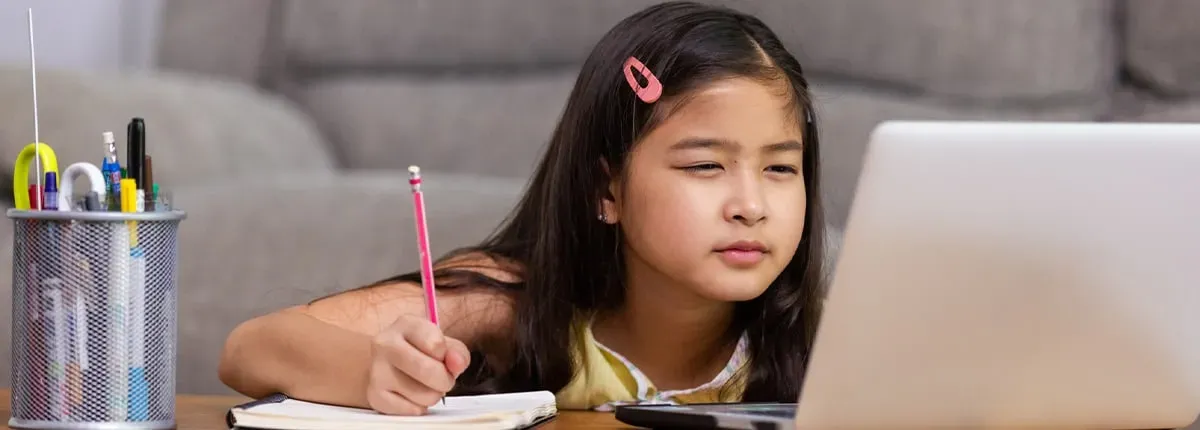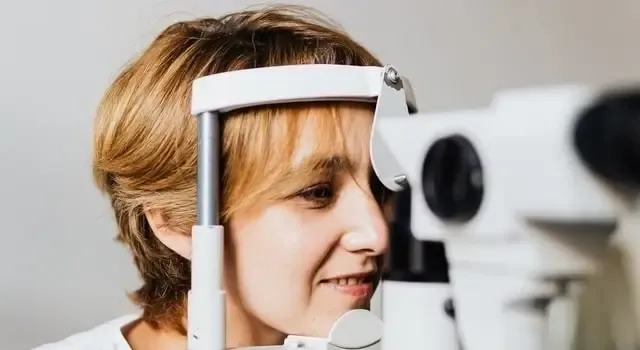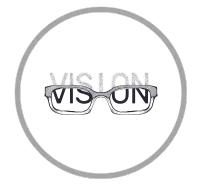Teens & Myopia
Guide to Myopia Management for Teens
FSDAVCFEBFEVSDDVFSD
FSDAVCFEBFEVSDDVFSD
FSDAVCFEBFEVSDDVFSD
Understanding Teen Myopia
What if the lines on the board at school blur into an indecipherable haze, or the distant horizon is just a vague smudge of colors? For many teens, this is a daily reality due to myopia, or nearsightedness.
This condition, which makes faraway objects appear blurry while keeping close-up vision clear, is affecting an ever-growing number of young people around the globe. Are there ways to manage and even slow down the progression of this pervasive vision problem? Here, we will address the mystery behind myopia in teens, exploring both the well-known and hidden strategies that can make a significant difference.
What if the lines on the board at school blur into an indecipherable haze, or the distant horizon is just a vague smudge of colors? For many teens, this is a daily reality due to myopia, or nearsightedness.

This condition, which makes faraway objects appear blurry while keeping close-up vision clear, is affecting an ever-growing number of young people around the globe. Are there ways to manage and even slow down the progression of this pervasive vision problem? Here, we will address the mystery behind myopia in teens, exploring both the well-known and hidden strategies that can make a significant difference.

Factors Contributing to Myopia in Teens
The development of myopia in teenagers is influenced by a combination of genetic and environmental factors. Understanding these contributors is essential for effective teen myopia management. Genetics plays a significant role in myopia progression in adolescents. If one or both parents are myopic, the likelihood of their children developing myopia increases substantially. This genetic predisposition underscores the importance of early intervention and regular eye check-ups as part of myopia prevention in teens.
Environmental influences and lifestyle choices also contribute significantly to the development and progression of myopia. Prolonged screen time, whether from computers, tablets, or smartphones, is a major factor. Teens who spend extensive hours on these devices are at higher risk, making it critical to incorporate strategies for myopia control for teenagers. Encouraging outdoor activities and ensuring proper lighting and screen ergonomics are crucial steps in managing myopia and promoting healthy vision habits among teens. These proactive measures can help mitigate the impact of environmental factors on myopia progression, supporting long-term eye health.
Importance of Regular Eye Check-ups

Regular eye check-ups are a cornerstone of effective teen myopia management. Routine examinations help in early detection of myopia, which is important for timely intervention. For myopia control for teenagers, it is recommended that teens visit an eye care professional at least once a year.
These check-ups not only ensure that any changes in vision are promptly addressed but also provide opportunities for personalized guidance on lifestyle adjustments and treatment options. During these check-ups, eye care professionals can monitor myopia progression in adolescents and adjust treatment plans as needed. This proactive approach aids in managing teen myopia effectively and can prevent the condition from worsening.

Early detection and treatment are vital components of myopia prevention in teens, helping to maintain good teenage eye health.Regular eye check-ups are crucial for individuals with myopia, as they allow for early detection and proactive management of the condition. These check-ups enable eye care professionals to monitor changes in vision and myopia progression, providing opportunities to adjust treatment plans promptly. For adolescents and young adults, whose eyes are still developing, regular exams are particularly important as they can help identify any underlying issues that may affect vision health in the long term.
Beyond corrective measures like glasses or contact lenses, these appointments also offer educational opportunities, empowering patients with knowledge on optimal eye care practices and lifestyle adjustments that can support overall eye health and minimize the impact of myopia. By prioritizing regular eye exams, individuals with myopia can effectively maintain good vision and quality of life throughout their lives. Moreover, regular visits enable optometrists to educate teens and their parents on the importance of adhering to prescribed eye care routines and lifestyle modifications that can slow myopia progression, fostering habits that support long-term vision wellness.
Options for Corrective Lenses
When it comes to myopia treatment for teens, choosing the right corrective lenses is crucial. Glasses and contact lenses are the most common options for managing teen myopia. Glasses are often the first line of defense in teen myopia management. They are easy to use, require minimal maintenance, and are available in various styles that can appeal to teenagers. Glasses provide a simple and effective way to correct vision, making them a popular choice among teens and their parents.
Contact lenses offer an alternative for those who prefer not to wear glasses. They can provide a wider field of vision and are less affected by weather conditions like rain and fog. For teens who are active in sports or other physical activities, contact lenses can be a more convenient option. However, proper hygiene and handling are crucial to avoid eye infections.
When selecting between glasses and contact lenses, it's essential to consider factors such as lifestyle, comfort, and visual preferences. Optometrists can help teens and their families make informed decisions based on individual needs and habits. Regular follow-ups with eye care professionals ensure that the chosen corrective measures continue to provide optimal vision correction and comfort, supporting teens in their daily activities and overall quality of life.
Lifestyle Changes to Manage Myopia
Effective teen myopia management involves more than just corrective lenses. Making certain lifestyle adjustments can play a significant role in myopia control for teenagers and help slow the myopia progression in adolescents. One of the primary contributors to worsening myopia is excessive screen time. Prolonged use of computers, tablets, and smartphones can strain the eyes and accelerate myopia progression.
Encouraging teens to take regular breaks using the 20-20-20 rule (every 20 minutes, look at something 20 feet away for at least 20 seconds) can help reduce eye strain. Spending more time outdoors has been shown to have a protective effect against myopia. Natural light and looking at distant objects help relax the eye muscles and reduce the risk of myopia progression.
Effective teen myopia management involves more than just corrective lenses. Making certain lifestyle adjustments can play a significant role in myopia control for teenagers and help slow the myopia progression in adolescents. One of the primary contributors to worsening myopia is excessive screen time. Prolonged use of computers, tablets, and smartphones can strain the eyes and accelerate myopia progression. Encouraging teens to take regular breaks using the 20-20-20 rule (every 20 minutes, look at something 20 feet away for at least 20 seconds) can help reduce eye strain. Spending more time outdoors has been shown to have a protective effect against myopia. Natural light and looking at distant objects help relax the eye muscles and reduce the risk of myopia progression.


Promoting outdoor activities, such as sports or simple walks in the park, can be an effective strategy for myopia prevention in teens. In addition to managing screen time, ensuring proper lighting and ergonomic setup when using digital devices can also mitigate eye strain. Moreover, promoting balanced and nutritious diets rich in eye-healthy nutrients like Vitamin A, C, and Omega-3 fatty acids supports overall eye health and may contribute to managing myopia progression in teens. By combining these lifestyle adjustments with regular eye check-ups and appropriate corrective measures, parents and caregivers can effectively support teens in maintaining optimal vision health and quality of life.
Promoting outdoor activities, such as sports or simple walks in the park, can be an effective strategy for myopia prevention in teens. In addition to managing screen time, ensuring proper lighting and ergonomic setup when using digital devices can also mitigate eye strain. Moreover, promoting balanced and nutritious diets rich in eye-healthy nutrients like Vitamin A, C, and Omega-3 fatty acids supports overall eye health and may contribute to managing myopia progression in teens. By combining these lifestyle adjustments with regular eye check-ups and appropriate corrective measures, parents and caregivers can effectively support teens in maintaining optimal vision health and quality of life.
Orthokeratology (Ortho-K) Option for Teens
Orthokeratology, or Ortho-K for teens, is a non-surgical treatment that involves wearing specially designed rigid gas-permeable contact lenses overnight. These lenses gently reshape the cornea, temporarily correcting myopia so that glasses or contact lenses are not needed during the day. This method has gained popularity as an effective option for myopia control for teenagers.
Ortho-K offers several benefits for teens. It eliminates the need for daytime corrective lenses, which can be especially advantageous for those who are active in sports or other physical activities. By reshaping the cornea overnight, Ortho-K lenses provide clear vision throughout the day without the hassle of traditional glasses or contacts. Ortho-K is particularly beneficial for active teens involved in sports or physical activities, as it eliminates the inconvenience of wearing corrective lenses during these pursuits.
One of the key advantages of Ortho-K is its ability to slow down myopia progression. By reshaping the cornea overnight, these lenses can potentially reduce the degree of nearsightedness over time. This treatment option requires commitment to wearing the lenses consistently and following regular check-ups with an eye care professional to ensure the corneal reshaping remains effective and safe for long-term use.
Pharmacological Interventions for Myopia Control
Pharmacological treatments are another effective option for myopia control for teenagers. One of the most promising treatments involves the use of atropine eye drops. These drops, when used in low concentrations, have been shown to slow down the progression of myopia in children and adolescents. Atropine eye drops work by temporarily paralyzing the focusing mechanism of the eye, which reduces eye strain and the elongation of the eyeball. This treatment is particularly beneficial for myopia prevention in teens who are at a high risk of developing severe myopia.
Parents and teens should work closely with their eye care professionals to determine the best course of action, which may include a combination of lifestyle adjustments, corrective lenses, and pharmacological treatments. This holistic approach not only slows myopia progression in adolescents but also supports overall teenage eye health.
Pharmacological treatments are another effective option for myopia control for teenagers. One of the most promising treatments involves the use of atropine eye drops. These drops, when used in low concentrations, have been shown to slow down the progression of myopia in children and adolescents. Atropine eye drops work by temporarily paralyzing the focusing mechanism of the eye, which reduces eye strain and the elongation of the eyeball. This treatment is particularly beneficial for myopia prevention in teens who are at a high risk of developing severe myopia.
Parents and teens should work closely with their eye care professionals to determine the best course of action, which may include a combination of lifestyle adjustments, corrective lenses, and pharmacological treatments. This holistic approach not only slows myopia progression in adolescents but also supports overall teenage eye health.
In Conclusion to Teen Myopia Management
Managing myopia in teens requires a multifaceted approach, combining lifestyle adjustments, regular eye check-ups, and effective treatments like ortho-k for teens, multifocal lenses for teens, and atropine eye drops. Parental support is key to ensuring these strategies are followed, promoting better teenage eye health.
By addressing both genetic and environmental factors, we can slow myopia progression in adolescents and improve their quality of life. Be proactive about your teen's eye health, schedule an eye exam today, and explore the best myopia solutions for teens to protect their vision for the future. Visit your eye care professional at Kleinwood Vision today for personalized advice.

Contact Info
Hours of Operation
Mon - Fri | 9:00 AM - 5:00 PM
Sat - Sun | Closed
Holiday Hours: We are closed for the following holidays: New Years Day, Memorial Day, Independence Day, Labor Day, Thanksgiving Day, Christmas Day
© 2026 Kleinwood Vision. All rights Reserved.


